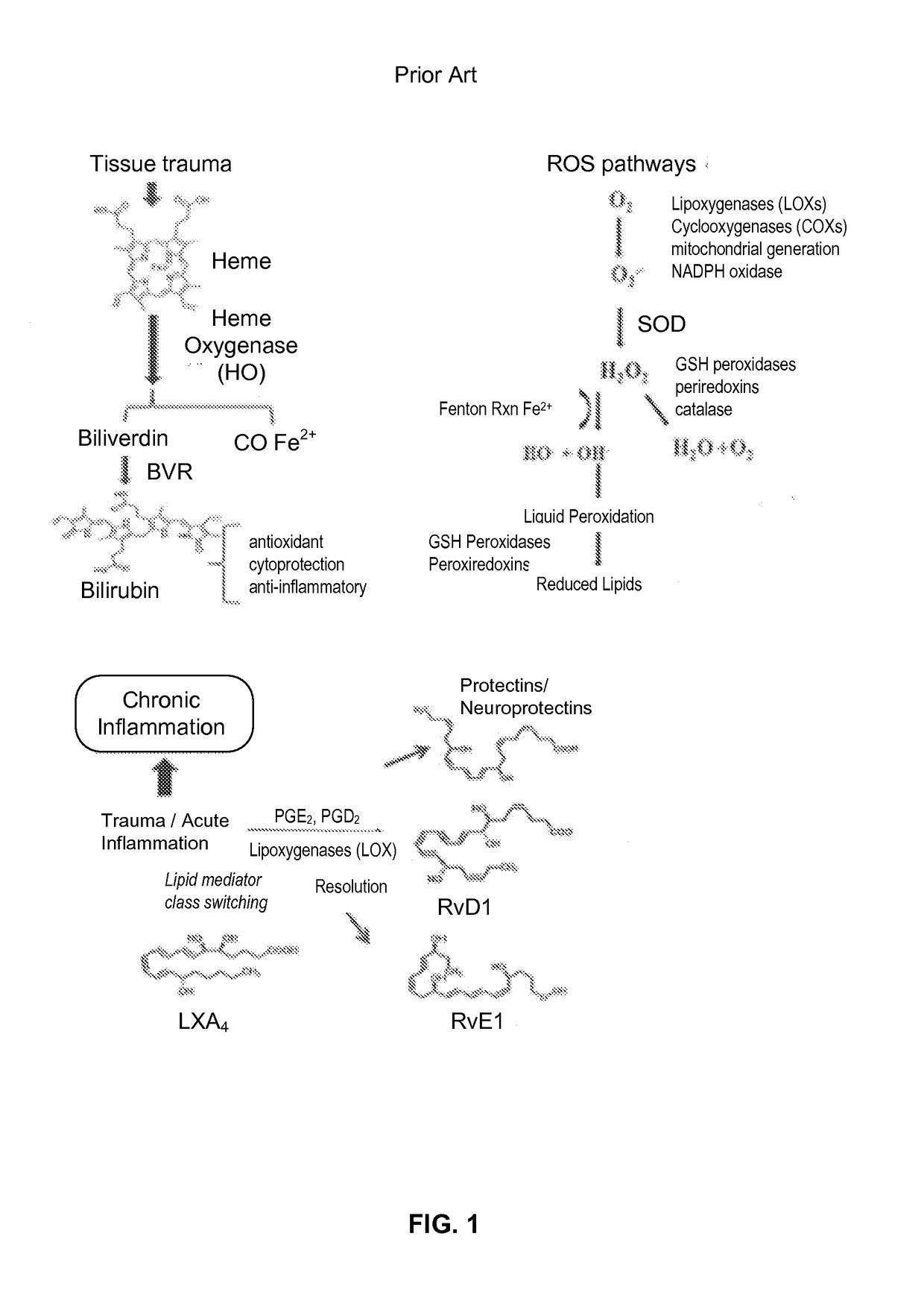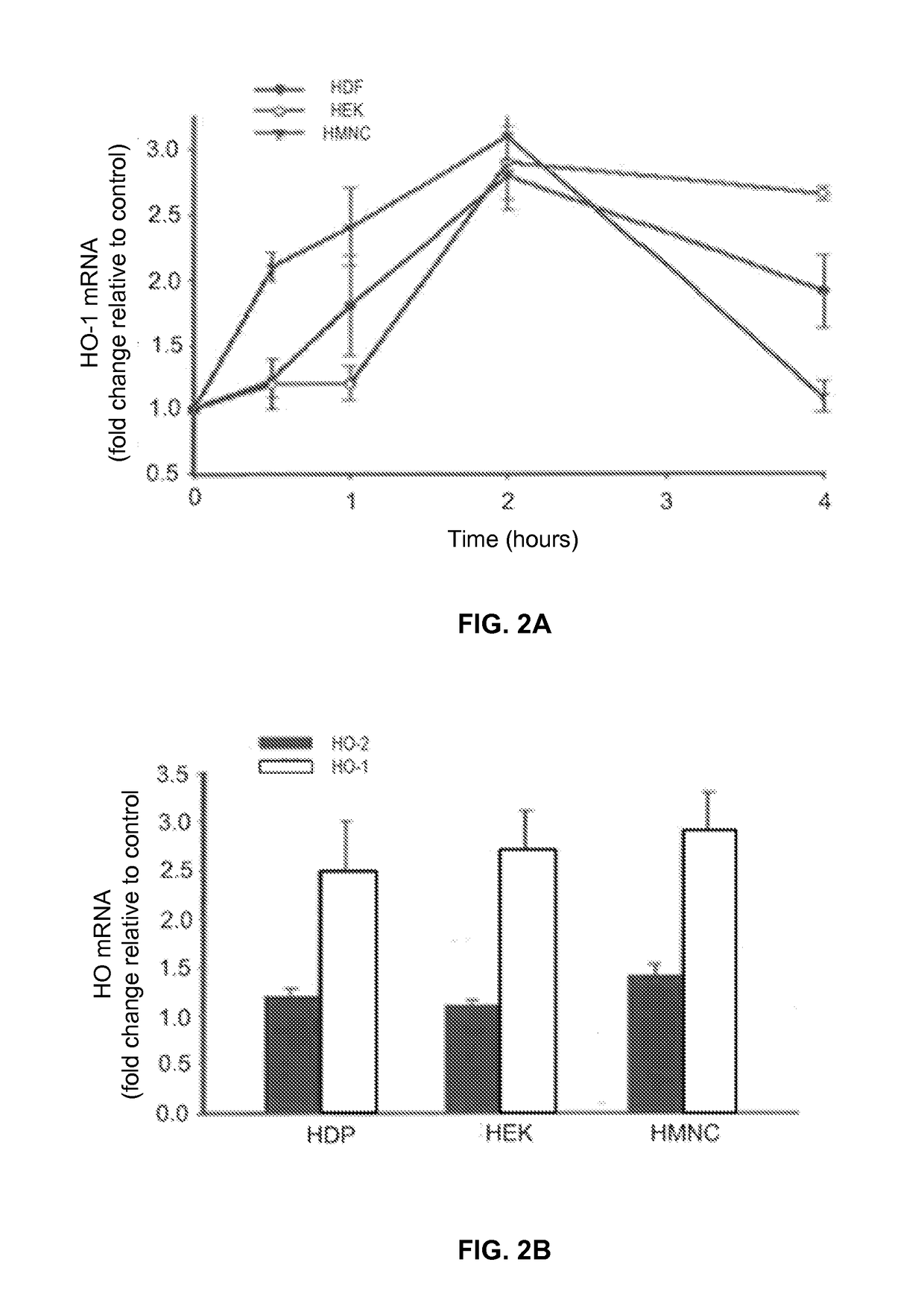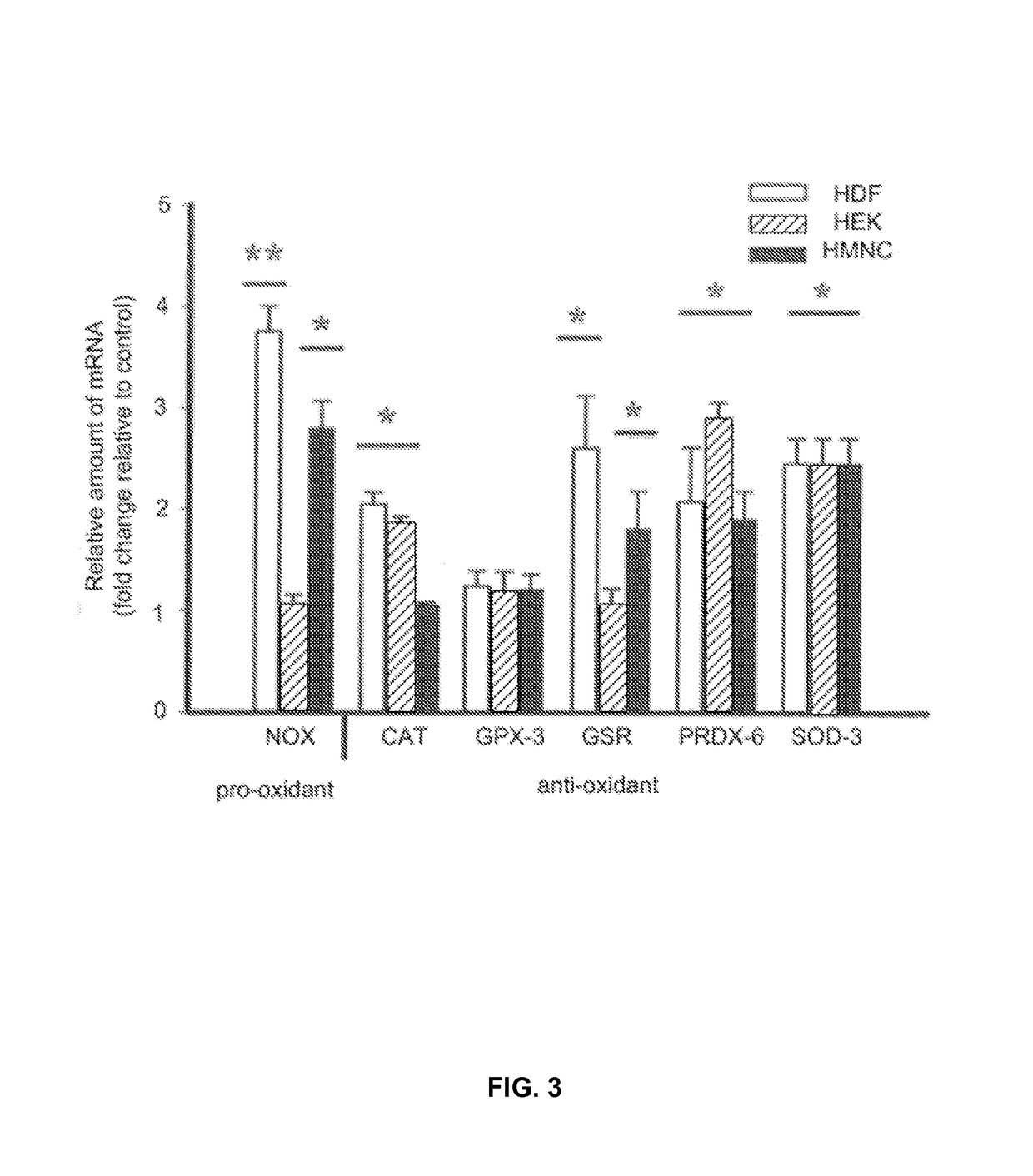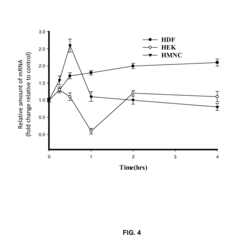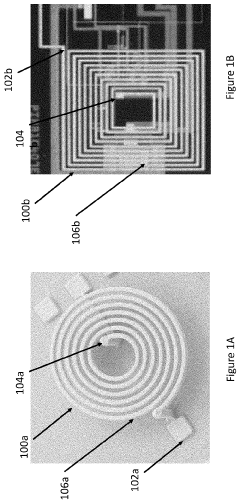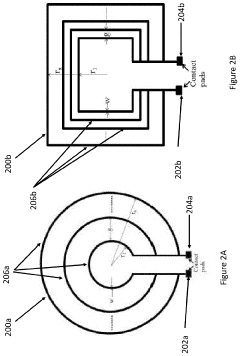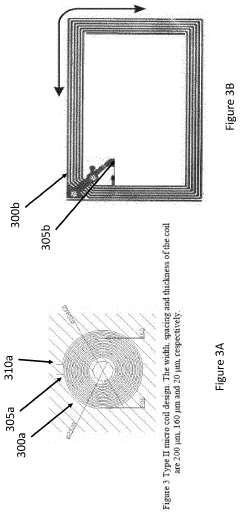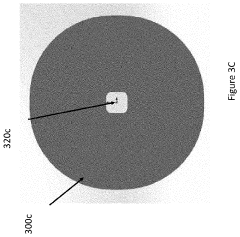How PEMF Therapy Affects Synaptic Plasticity in the Brain?
AUG 11, 20259 MIN READ
Generate Your Research Report Instantly with AI Agent
Patsnap Eureka helps you evaluate technical feasibility & market potential.
PEMF and Synaptic Plasticity: Background and Objectives
Pulsed Electromagnetic Field (PEMF) therapy has emerged as a promising non-invasive treatment modality in neuroscience, with potential applications in enhancing synaptic plasticity within the brain. This technology, which utilizes electromagnetic fields to stimulate cellular activity, has garnered significant attention in recent years due to its potential to modulate neural function and promote neuroplasticity.
The concept of synaptic plasticity, first proposed by Donald Hebb in 1949, refers to the ability of synapses to strengthen or weaken over time in response to increases or decreases in their activity. This fundamental property of the nervous system is crucial for learning, memory formation, and adaptive behaviors. Understanding how PEMF therapy interacts with synaptic plasticity mechanisms is essential for developing targeted interventions for various neurological conditions.
The primary objective of this technical research report is to explore the intricate relationship between PEMF therapy and synaptic plasticity in the brain. We aim to elucidate the underlying mechanisms by which electromagnetic fields influence synaptic function, neuronal communication, and overall brain plasticity. This investigation will encompass a comprehensive review of current literature, experimental findings, and theoretical models that shed light on the effects of PEMF on synaptic structures and functions.
Furthermore, this report will examine the historical development of PEMF technology and its applications in neuroscience. From its origins in bone healing to its current use in neurological disorders, we will trace the evolution of PEMF therapy and its growing relevance in the field of brain plasticity. This historical context will provide valuable insights into the technological advancements and scientific discoveries that have shaped our understanding of PEMF's potential in modulating synaptic plasticity.
Additionally, we will explore the current state of research on PEMF therapy's effects on various aspects of synaptic plasticity, including long-term potentiation (LTP), long-term depression (LTD), dendritic spine morphology, and neurotransmitter release. By analyzing these key components, we aim to build a comprehensive picture of how PEMF therapy influences the brain's capacity for change and adaptation at the synaptic level.
Lastly, this report will outline the potential clinical applications of PEMF therapy in treating neurological disorders characterized by impaired synaptic plasticity, such as Alzheimer's disease, depression, and stroke. By identifying the most promising avenues for future research and development, we hope to guide the direction of subsequent studies and technological innovations in this rapidly evolving field.
The concept of synaptic plasticity, first proposed by Donald Hebb in 1949, refers to the ability of synapses to strengthen or weaken over time in response to increases or decreases in their activity. This fundamental property of the nervous system is crucial for learning, memory formation, and adaptive behaviors. Understanding how PEMF therapy interacts with synaptic plasticity mechanisms is essential for developing targeted interventions for various neurological conditions.
The primary objective of this technical research report is to explore the intricate relationship between PEMF therapy and synaptic plasticity in the brain. We aim to elucidate the underlying mechanisms by which electromagnetic fields influence synaptic function, neuronal communication, and overall brain plasticity. This investigation will encompass a comprehensive review of current literature, experimental findings, and theoretical models that shed light on the effects of PEMF on synaptic structures and functions.
Furthermore, this report will examine the historical development of PEMF technology and its applications in neuroscience. From its origins in bone healing to its current use in neurological disorders, we will trace the evolution of PEMF therapy and its growing relevance in the field of brain plasticity. This historical context will provide valuable insights into the technological advancements and scientific discoveries that have shaped our understanding of PEMF's potential in modulating synaptic plasticity.
Additionally, we will explore the current state of research on PEMF therapy's effects on various aspects of synaptic plasticity, including long-term potentiation (LTP), long-term depression (LTD), dendritic spine morphology, and neurotransmitter release. By analyzing these key components, we aim to build a comprehensive picture of how PEMF therapy influences the brain's capacity for change and adaptation at the synaptic level.
Lastly, this report will outline the potential clinical applications of PEMF therapy in treating neurological disorders characterized by impaired synaptic plasticity, such as Alzheimer's disease, depression, and stroke. By identifying the most promising avenues for future research and development, we hope to guide the direction of subsequent studies and technological innovations in this rapidly evolving field.
Market Analysis for PEMF Therapy in Neuroscience
The market for Pulsed Electromagnetic Field (PEMF) therapy in neuroscience is experiencing significant growth, driven by increasing awareness of its potential benefits for brain health and neurological disorders. The global PEMF therapy devices market, which includes applications in neuroscience, was valued at approximately $500 million in 2020 and is projected to reach $1.3 billion by 2028, with a compound annual growth rate (CAGR) of 12.5% during this period.
Neuroscience applications of PEMF therapy are gaining traction due to the growing prevalence of neurological disorders such as Alzheimer's disease, Parkinson's disease, and depression. The World Health Organization estimates that neurological disorders affect up to 1 billion people worldwide, creating a substantial market opportunity for PEMF therapy solutions.
The market for PEMF therapy in neuroscience is segmented based on device type, application, and end-user. Portable PEMF devices are witnessing higher demand due to their convenience and home-use capabilities. In terms of applications, the treatment of depression, anxiety, and cognitive disorders represents a significant portion of the market share.
North America currently dominates the PEMF therapy market in neuroscience, accounting for approximately 40% of the global market share. This is attributed to the presence of key market players, advanced healthcare infrastructure, and higher adoption rates of new technologies. Europe follows closely, with a market share of around 30%, driven by increasing research activities and growing awareness among healthcare professionals.
The Asia-Pacific region is expected to witness the fastest growth in the coming years, with a CAGR of over 15%. This growth is fueled by improving healthcare infrastructure, rising disposable incomes, and a large patient population in countries like China and India.
Key market players in the PEMF therapy neuroscience sector include NeuroSoft, Orthofix Medical Inc., and HealthyLine. These companies are focusing on research and development to enhance the efficacy of PEMF devices for neurological applications and expand their product portfolios.
Challenges in the market include the need for more extensive clinical evidence to support the efficacy of PEMF therapy in various neurological conditions and regulatory hurdles in some regions. However, ongoing research into the effects of PEMF on synaptic plasticity and brain function is expected to drive market growth and expand applications in neuroscience.
The market is also witnessing trends such as the integration of PEMF therapy with other treatment modalities, the development of more targeted and personalized PEMF protocols for specific neurological conditions, and the incorporation of smart technologies for better patient monitoring and treatment optimization.
Neuroscience applications of PEMF therapy are gaining traction due to the growing prevalence of neurological disorders such as Alzheimer's disease, Parkinson's disease, and depression. The World Health Organization estimates that neurological disorders affect up to 1 billion people worldwide, creating a substantial market opportunity for PEMF therapy solutions.
The market for PEMF therapy in neuroscience is segmented based on device type, application, and end-user. Portable PEMF devices are witnessing higher demand due to their convenience and home-use capabilities. In terms of applications, the treatment of depression, anxiety, and cognitive disorders represents a significant portion of the market share.
North America currently dominates the PEMF therapy market in neuroscience, accounting for approximately 40% of the global market share. This is attributed to the presence of key market players, advanced healthcare infrastructure, and higher adoption rates of new technologies. Europe follows closely, with a market share of around 30%, driven by increasing research activities and growing awareness among healthcare professionals.
The Asia-Pacific region is expected to witness the fastest growth in the coming years, with a CAGR of over 15%. This growth is fueled by improving healthcare infrastructure, rising disposable incomes, and a large patient population in countries like China and India.
Key market players in the PEMF therapy neuroscience sector include NeuroSoft, Orthofix Medical Inc., and HealthyLine. These companies are focusing on research and development to enhance the efficacy of PEMF devices for neurological applications and expand their product portfolios.
Challenges in the market include the need for more extensive clinical evidence to support the efficacy of PEMF therapy in various neurological conditions and regulatory hurdles in some regions. However, ongoing research into the effects of PEMF on synaptic plasticity and brain function is expected to drive market growth and expand applications in neuroscience.
The market is also witnessing trends such as the integration of PEMF therapy with other treatment modalities, the development of more targeted and personalized PEMF protocols for specific neurological conditions, and the incorporation of smart technologies for better patient monitoring and treatment optimization.
Current State and Challenges in PEMF Neuromodulation
Pulsed Electromagnetic Field (PEMF) therapy has emerged as a promising neuromodulation technique, with growing interest in its potential to influence synaptic plasticity in the brain. The current state of PEMF neuromodulation research is characterized by a mix of encouraging findings and significant challenges that need to be addressed.
Recent studies have demonstrated that PEMF therapy can modulate neural activity and potentially enhance synaptic plasticity. Researchers have observed changes in neurotransmitter release, ion channel activity, and gene expression following PEMF exposure. These findings suggest that PEMF therapy may have neuroprotective and neuroregenerative effects, particularly in conditions such as traumatic brain injury, stroke, and neurodegenerative diseases.
However, the field faces several critical challenges that hinder widespread clinical adoption and limit our understanding of the underlying mechanisms. One major obstacle is the lack of standardization in PEMF parameters, including frequency, intensity, waveform, and duration of exposure. This variability makes it difficult to compare results across studies and establish optimal treatment protocols.
Another significant challenge is the limited understanding of the precise mechanisms by which PEMF therapy affects synaptic plasticity. While some hypotheses have been proposed, such as the modulation of calcium signaling and the activation of specific cellular pathways, the exact molecular and cellular processes remain unclear. This knowledge gap hampers the development of targeted and more effective PEMF therapies.
The heterogeneity of brain tissue and the complexity of neural networks pose additional challenges in PEMF neuromodulation. Different brain regions and cell types may respond differently to electromagnetic stimulation, making it difficult to predict and control the effects of PEMF therapy across the entire brain.
Furthermore, there is a need for more robust and well-designed clinical trials to establish the efficacy and safety of PEMF therapy for various neurological conditions. Many existing studies have small sample sizes, lack proper controls, or suffer from methodological limitations, which limits the generalizability of their findings.
Technical challenges also persist in the development of PEMF devices for neuromodulation. Creating devices that can deliver precise and localized electromagnetic fields to specific brain regions while minimizing off-target effects remains a significant hurdle. Additionally, optimizing the design of PEMF coils and ensuring their compatibility with other neuroimaging techniques, such as fMRI, is crucial for advancing research in this field.
Lastly, regulatory considerations and the need for standardized safety protocols present challenges in the clinical implementation of PEMF therapy. Establishing clear guidelines for the safe use of PEMF devices in various patient populations and addressing potential long-term effects are essential steps in advancing this technology.
Recent studies have demonstrated that PEMF therapy can modulate neural activity and potentially enhance synaptic plasticity. Researchers have observed changes in neurotransmitter release, ion channel activity, and gene expression following PEMF exposure. These findings suggest that PEMF therapy may have neuroprotective and neuroregenerative effects, particularly in conditions such as traumatic brain injury, stroke, and neurodegenerative diseases.
However, the field faces several critical challenges that hinder widespread clinical adoption and limit our understanding of the underlying mechanisms. One major obstacle is the lack of standardization in PEMF parameters, including frequency, intensity, waveform, and duration of exposure. This variability makes it difficult to compare results across studies and establish optimal treatment protocols.
Another significant challenge is the limited understanding of the precise mechanisms by which PEMF therapy affects synaptic plasticity. While some hypotheses have been proposed, such as the modulation of calcium signaling and the activation of specific cellular pathways, the exact molecular and cellular processes remain unclear. This knowledge gap hampers the development of targeted and more effective PEMF therapies.
The heterogeneity of brain tissue and the complexity of neural networks pose additional challenges in PEMF neuromodulation. Different brain regions and cell types may respond differently to electromagnetic stimulation, making it difficult to predict and control the effects of PEMF therapy across the entire brain.
Furthermore, there is a need for more robust and well-designed clinical trials to establish the efficacy and safety of PEMF therapy for various neurological conditions. Many existing studies have small sample sizes, lack proper controls, or suffer from methodological limitations, which limits the generalizability of their findings.
Technical challenges also persist in the development of PEMF devices for neuromodulation. Creating devices that can deliver precise and localized electromagnetic fields to specific brain regions while minimizing off-target effects remains a significant hurdle. Additionally, optimizing the design of PEMF coils and ensuring their compatibility with other neuroimaging techniques, such as fMRI, is crucial for advancing research in this field.
Lastly, regulatory considerations and the need for standardized safety protocols present challenges in the clinical implementation of PEMF therapy. Establishing clear guidelines for the safe use of PEMF devices in various patient populations and addressing potential long-term effects are essential steps in advancing this technology.
Existing PEMF Protocols for Synaptic Plasticity Modulation
01 PEMF therapy for enhancing synaptic plasticity
Pulsed electromagnetic field (PEMF) therapy can be used to enhance synaptic plasticity in the brain. This non-invasive treatment method applies electromagnetic fields to stimulate neural activity and promote the formation and strengthening of synaptic connections. PEMF therapy has shown potential in improving cognitive function and neuroplasticity.- PEMF therapy for enhancing synaptic plasticity: Pulsed electromagnetic field (PEMF) therapy can be used to enhance synaptic plasticity in the brain. This non-invasive treatment method applies electromagnetic fields to stimulate neural activity and promote the formation and strengthening of synaptic connections. PEMF therapy has shown potential in improving cognitive function and neuroplasticity.
- Combination of PEMF therapy with neurotransmitter modulation: Combining PEMF therapy with techniques that modulate neurotransmitter activity can enhance its effects on synaptic plasticity. This approach may involve using specific frequencies or patterns of electromagnetic stimulation alongside pharmacological interventions or other therapies that target neurotransmitter systems, potentially leading to more effective treatments for neurological disorders.
- PEMF devices for targeted brain stimulation: Specialized PEMF devices can be designed for targeted brain stimulation to promote synaptic plasticity in specific regions. These devices may incorporate advanced coil designs, precise frequency control, and neuroimaging guidance to deliver electromagnetic fields to desired areas of the brain, potentially enhancing the efficacy of PEMF therapy for various neurological conditions.
- AI-assisted PEMF therapy optimization: Artificial intelligence (AI) algorithms can be employed to optimize PEMF therapy protocols for enhancing synaptic plasticity. These AI systems can analyze patient data, treatment outcomes, and neurophysiological markers to personalize PEMF parameters and treatment schedules, potentially improving the effectiveness of the therapy for individual patients.
- Monitoring and assessment of PEMF-induced synaptic changes: Methods and systems for monitoring and assessing PEMF-induced synaptic changes can be developed to evaluate the effectiveness of the therapy. These may include advanced neuroimaging techniques, electrophysiological measurements, or biomarker analysis to track changes in synaptic plasticity and neural connectivity over the course of PEMF treatment.
02 Combination of PEMF therapy with neurotransmitter modulation
Combining PEMF therapy with techniques that modulate neurotransmitter activity can enhance its effects on synaptic plasticity. This approach may involve the use of specific frequencies or patterns of electromagnetic stimulation alongside pharmacological interventions or other therapies that target neurotransmitter systems, potentially leading to more effective treatments for neurological disorders.Expand Specific Solutions03 PEMF devices for targeted brain stimulation
Specialized PEMF devices can be designed for targeted brain stimulation to promote synaptic plasticity in specific regions. These devices may incorporate advanced coil designs, precise frequency control, and neuroimaging guidance to deliver electromagnetic fields to desired areas of the brain, potentially enhancing the efficacy of PEMF therapy for various neurological conditions.Expand Specific Solutions04 AI-assisted PEMF therapy optimization
Artificial intelligence (AI) algorithms can be employed to optimize PEMF therapy protocols for enhancing synaptic plasticity. These AI systems can analyze patient data, treatment outcomes, and neurophysiological markers to personalize PEMF parameters and treatment schedules, potentially improving the effectiveness of the therapy for individual patients.Expand Specific Solutions05 Monitoring and assessment of PEMF-induced synaptic changes
Advanced monitoring and assessment techniques can be used to evaluate the effects of PEMF therapy on synaptic plasticity. These may include neuroimaging methods, electrophysiological recordings, and cognitive tests to measure changes in brain connectivity, synaptic strength, and functional outcomes, providing valuable insights into the mechanisms and efficacy of PEMF-induced neuroplasticity.Expand Specific Solutions
Key Players in PEMF Therapy and Neurotechnology
The field of PEMF therapy's impact on synaptic plasticity in the brain is in an emerging stage, with growing market potential as research advances. The technology's maturity is still developing, with companies like Regenesis Biomedical and SofPulse leading in medical device applications. Academic institutions such as the Institute of Science & Technology Austria and The Salk Institute for Biological Studies are contributing to fundamental research. The market is seeing increased interest from both medical technology firms and research organizations, indicating a competitive landscape that spans commercial and academic sectors. As the understanding of PEMF's neurological effects deepens, we can expect further market expansion and technological refinement in this promising area of neuroscience and therapeutic intervention.
Regenesis Biomedical, Inc.
Technical Solution: Regenesis Biomedical has developed a proprietary PEMF therapy system that utilizes specific electromagnetic frequencies to target synaptic plasticity in the brain. Their approach focuses on modulating neuronal activity through controlled electromagnetic pulses, potentially enhancing synaptic connections and promoting neuroplasticity. The company's PEMF devices are designed to deliver precise, low-intensity electromagnetic fields that can penetrate brain tissue non-invasively. This technology aims to stimulate the release of neurotransmitters and growth factors, which are crucial for synaptic plasticity and neuronal communication[1][3]. Regenesis Biomedical's PEMF therapy has shown promising results in preclinical studies, demonstrating increased dendritic spine density and improved synaptic function in animal models of neurological disorders[2].
Strengths: Non-invasive approach, precise control of electromagnetic fields, potential for targeted neuroplasticity enhancement. Weaknesses: Limited long-term clinical data on efficacy, potential variability in individual responses to PEMF therapy.
SofPulse, Inc.
Technical Solution: SofPulse has developed a unique PEMF therapy system that focuses on modulating synaptic plasticity through low-frequency, targeted electromagnetic pulses. Their technology is designed to enhance neuronal communication and promote synaptic strengthening by inducing subtle changes in the electrical properties of neuronal membranes. SofPulse's PEMF devices utilize a proprietary waveform that is believed to resonate with specific neural circuits, potentially facilitating long-term potentiation (LTP) and long-term depression (LTD) processes crucial for synaptic plasticity[4]. The company's approach aims to optimize the balance between excitatory and inhibitory neurotransmission, which is essential for maintaining healthy brain function and promoting neuroplasticity[5]. Preliminary studies using SofPulse's technology have shown promising results in enhancing cognitive function and memory formation in both healthy individuals and those with neurological disorders[6].
Strengths: Targeted approach to specific neural circuits, potential for enhancing cognitive function and memory. Weaknesses: Limited large-scale clinical trials, potential for off-target effects on non-targeted brain regions.
Core Innovations in PEMF-Induced Synaptic Plasticity
Treatment of conditions susceptible to pulsed electromagnetic field therapy
PatentActiveUS20170354830A1
Innovation
- PEMF therapy is administered to modulate gene expression associated with inflammation pathways, including heme oxygenase, antioxidant enzymes, lipid mediator biosynthesis, and cytokines, using specific parameters such as electric field strength, pulse rate, and duration to produce measurable clinical effects on pain, nerve function, and wound healing.
Pulsed Electromagnetic Field Devices Integrated into Adjustable Clothing
PatentPendingUS20230104434A1
Innovation
- A pulsed electromagnetic field device integrated into wearable clothing, using arrays of planar microcoils that generate controlled, homogenous magnetic fields, allowing for comfortable, long-term use and targeted treatment of various brain-related disorders and conditions.
Safety and Regulatory Considerations for PEMF Therapy
The safety and regulatory considerations for Pulsed Electromagnetic Field (PEMF) therapy are crucial aspects that require thorough examination, especially in the context of its effects on synaptic plasticity in the brain. Regulatory bodies, such as the FDA in the United States and the EMA in Europe, have established guidelines for the use of PEMF devices in medical applications. These regulations primarily focus on ensuring the safety and efficacy of PEMF therapy for various conditions, including neurological disorders.
One of the primary safety concerns associated with PEMF therapy is the potential for electromagnetic interference with other medical devices. Patients with implanted electronic devices, such as pacemakers or deep brain stimulators, may be at risk of device malfunction due to PEMF exposure. As a result, regulatory bodies mandate clear contraindications and warnings for PEMF devices, emphasizing the importance of medical supervision for patients with such implants.
The intensity and frequency of electromagnetic fields used in PEMF therapy are also subject to regulatory scrutiny. While low-intensity PEMF therapy is generally considered safe, higher intensities may pose risks of tissue heating or other adverse effects. Regulatory agencies have established specific limits on the strength and duration of electromagnetic field exposure to mitigate these risks.
Long-term safety is another critical consideration in PEMF therapy regulation. As the effects of prolonged exposure to electromagnetic fields on brain function and overall health are not fully understood, regulatory bodies require ongoing post-market surveillance and long-term safety studies. This approach ensures that any potential adverse effects are identified and addressed promptly.
The regulatory landscape for PEMF therapy also encompasses manufacturing standards and quality control measures. Manufacturers must adhere to Good Manufacturing Practices (GMP) and demonstrate compliance with relevant safety standards, such as those set by the International Electrotechnical Commission (IEC) for medical electrical equipment.
As research into PEMF therapy's effects on synaptic plasticity progresses, regulatory frameworks may evolve to address specific considerations related to neurological applications. This could include more stringent requirements for preclinical and clinical studies focusing on brain function and potential cognitive effects.
In conclusion, the safety and regulatory considerations for PEMF therapy in the context of synaptic plasticity involve a complex interplay of device safety, patient protection, and scientific evidence. As this field continues to advance, ongoing collaboration between researchers, manufacturers, and regulatory bodies will be essential to ensure the safe and effective application of PEMF therapy in neurological treatments.
One of the primary safety concerns associated with PEMF therapy is the potential for electromagnetic interference with other medical devices. Patients with implanted electronic devices, such as pacemakers or deep brain stimulators, may be at risk of device malfunction due to PEMF exposure. As a result, regulatory bodies mandate clear contraindications and warnings for PEMF devices, emphasizing the importance of medical supervision for patients with such implants.
The intensity and frequency of electromagnetic fields used in PEMF therapy are also subject to regulatory scrutiny. While low-intensity PEMF therapy is generally considered safe, higher intensities may pose risks of tissue heating or other adverse effects. Regulatory agencies have established specific limits on the strength and duration of electromagnetic field exposure to mitigate these risks.
Long-term safety is another critical consideration in PEMF therapy regulation. As the effects of prolonged exposure to electromagnetic fields on brain function and overall health are not fully understood, regulatory bodies require ongoing post-market surveillance and long-term safety studies. This approach ensures that any potential adverse effects are identified and addressed promptly.
The regulatory landscape for PEMF therapy also encompasses manufacturing standards and quality control measures. Manufacturers must adhere to Good Manufacturing Practices (GMP) and demonstrate compliance with relevant safety standards, such as those set by the International Electrotechnical Commission (IEC) for medical electrical equipment.
As research into PEMF therapy's effects on synaptic plasticity progresses, regulatory frameworks may evolve to address specific considerations related to neurological applications. This could include more stringent requirements for preclinical and clinical studies focusing on brain function and potential cognitive effects.
In conclusion, the safety and regulatory considerations for PEMF therapy in the context of synaptic plasticity involve a complex interplay of device safety, patient protection, and scientific evidence. As this field continues to advance, ongoing collaboration between researchers, manufacturers, and regulatory bodies will be essential to ensure the safe and effective application of PEMF therapy in neurological treatments.
Ethical Implications of PEMF-Based Cognitive Enhancement
The ethical implications of PEMF-based cognitive enhancement are multifaceted and require careful consideration. As PEMF therapy demonstrates potential for improving synaptic plasticity in the brain, it raises significant questions about fairness, access, and societal impact.
One primary concern is the potential for creating cognitive disparities. If PEMF therapy proves effective in enhancing cognitive functions, it may lead to a divide between those who can afford or access the treatment and those who cannot. This could exacerbate existing socioeconomic inequalities, as enhanced cognitive abilities may translate to better academic and professional opportunities.
The concept of cognitive liberty also comes into play. While individuals should have the right to enhance their cognitive abilities, there are concerns about societal pressure to undergo such enhancements. This could lead to a scenario where PEMF-based cognitive enhancement becomes a de facto requirement in competitive environments, raising questions about autonomy and free choice.
Safety and long-term effects are crucial ethical considerations. While current research suggests PEMF therapy is generally safe, the long-term implications of regular cognitive enhancement are not yet fully understood. There is a need for extensive longitudinal studies to ensure that such interventions do not lead to unforeseen negative consequences on brain health or overall well-being.
The use of PEMF for cognitive enhancement also raises questions about authenticity and human identity. If cognitive abilities can be significantly altered through external means, it challenges our understanding of natural human capabilities and what constitutes an authentic self. This philosophical dilemma extends to how society values and rewards cognitive achievements.
In the realm of competitive environments, such as academics or sports, the use of PEMF for cognitive enhancement could be viewed as a form of cheating. This necessitates a reevaluation of rules and regulations in various fields to address the use of cognitive enhancement technologies.
Lastly, there are broader societal implications to consider. If PEMF-based cognitive enhancement becomes widespread, it could lead to shifts in societal norms and expectations regarding cognitive performance. This may result in increased pressure on individuals to constantly optimize their cognitive abilities, potentially impacting mental health and well-being.
One primary concern is the potential for creating cognitive disparities. If PEMF therapy proves effective in enhancing cognitive functions, it may lead to a divide between those who can afford or access the treatment and those who cannot. This could exacerbate existing socioeconomic inequalities, as enhanced cognitive abilities may translate to better academic and professional opportunities.
The concept of cognitive liberty also comes into play. While individuals should have the right to enhance their cognitive abilities, there are concerns about societal pressure to undergo such enhancements. This could lead to a scenario where PEMF-based cognitive enhancement becomes a de facto requirement in competitive environments, raising questions about autonomy and free choice.
Safety and long-term effects are crucial ethical considerations. While current research suggests PEMF therapy is generally safe, the long-term implications of regular cognitive enhancement are not yet fully understood. There is a need for extensive longitudinal studies to ensure that such interventions do not lead to unforeseen negative consequences on brain health or overall well-being.
The use of PEMF for cognitive enhancement also raises questions about authenticity and human identity. If cognitive abilities can be significantly altered through external means, it challenges our understanding of natural human capabilities and what constitutes an authentic self. This philosophical dilemma extends to how society values and rewards cognitive achievements.
In the realm of competitive environments, such as academics or sports, the use of PEMF for cognitive enhancement could be viewed as a form of cheating. This necessitates a reevaluation of rules and regulations in various fields to address the use of cognitive enhancement technologies.
Lastly, there are broader societal implications to consider. If PEMF-based cognitive enhancement becomes widespread, it could lead to shifts in societal norms and expectations regarding cognitive performance. This may result in increased pressure on individuals to constantly optimize their cognitive abilities, potentially impacting mental health and well-being.
Unlock deeper insights with Patsnap Eureka Quick Research — get a full tech report to explore trends and direct your research. Try now!
Generate Your Research Report Instantly with AI Agent
Supercharge your innovation with Patsnap Eureka AI Agent Platform!
